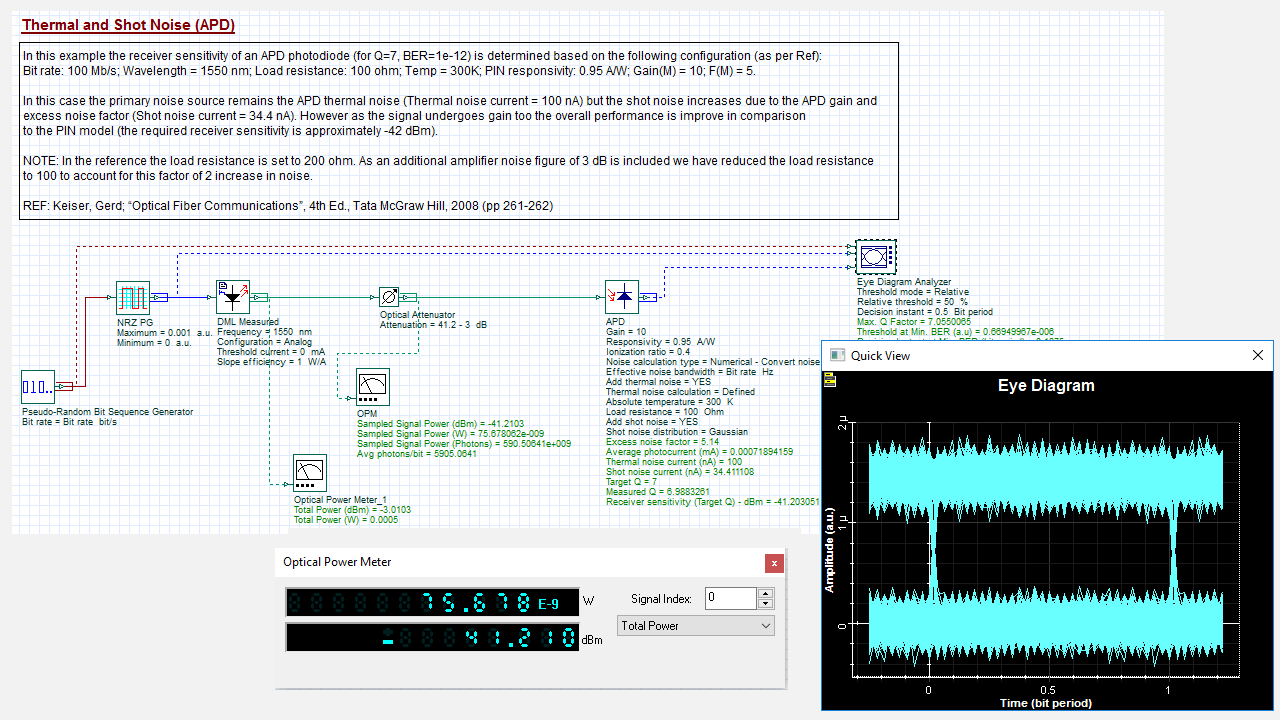One of the main working parts of any optical receiver is the photodetector (which converts optical power to an electric current). Either a PIN or APD (avalanche photodiode) photodetector can be used depending on the system performance objectives. This application notes demonstrates how to setup and measure (using OptiSystem) the receiver sensitivities of PIN and APD intensity-modulated direct-detection (IM-DD) systems, including: quantum-limited ideal PIN photodetection, thermal-noise limited PIN photodetection, thermal and shot-noise limited APD performance, and PIN photodetection with optical pre-amplification.
Compatibility:
- Application Category: OptiSystem Applications
- Tags: Applications, Home Page Applications, Video
Related:
- Published:


